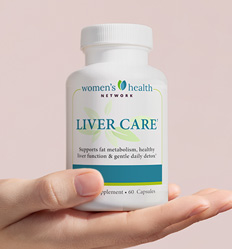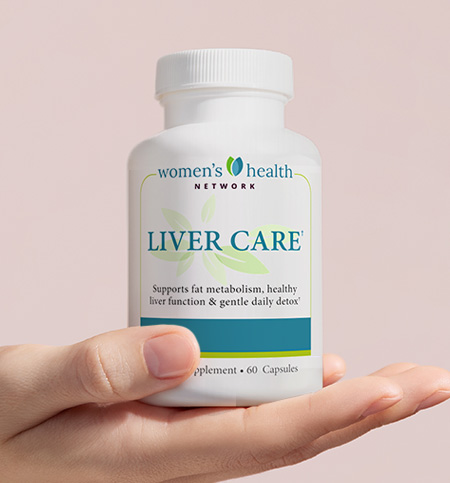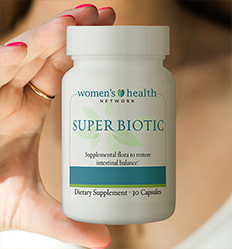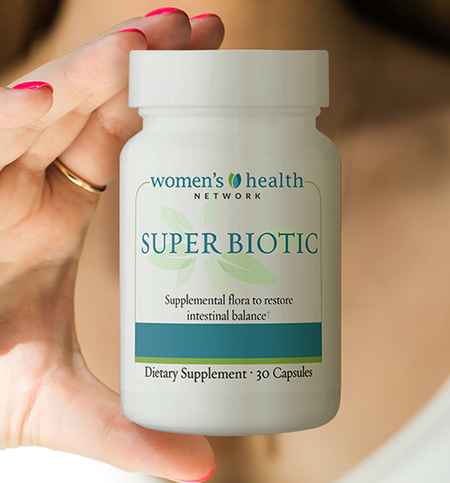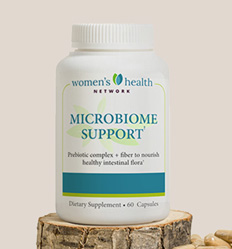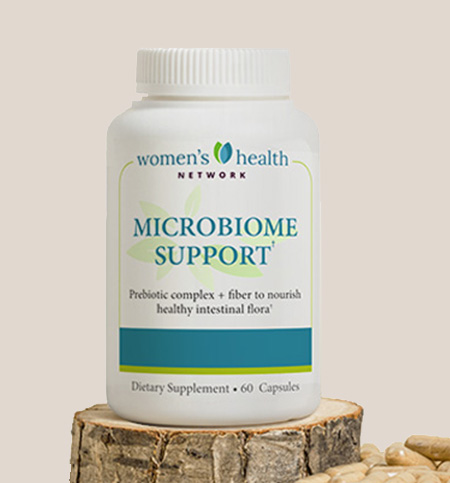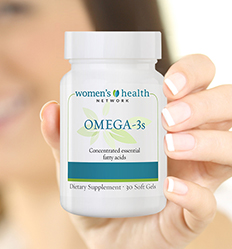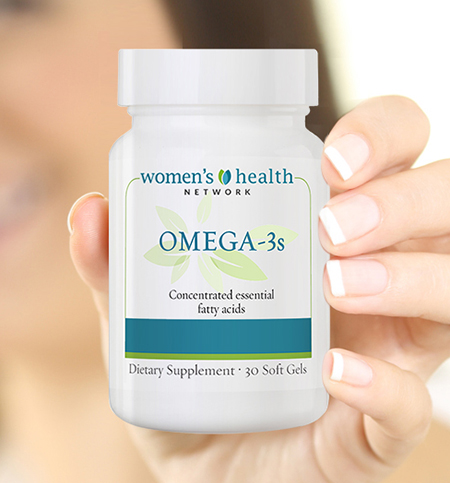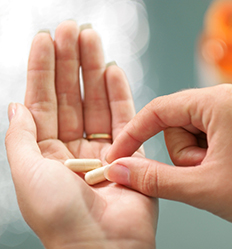Every day, without even realizing it, you may be exposed to chemicals that could be quietly wreaking havoc on your health. Per- and polyfluoroalkyl substances—better known as PFAS—are everywhere: in nonstick cookware, stain proof and waterproof clothing, food packaging and foods, plastic watch bands, and even the water you drink.
Dubbed “forever chemicals” because they don’t break down in the environment or the body, PFAS have been linked to serious health concerns, from hormonal disruption to fertility issues. For women, the risks are particularly alarming. Studies suggest that PFAS exposure may interfere with thyroid function, trigger hormonal imbalances, lower bone mineral density, and increase risk for certain cancers.
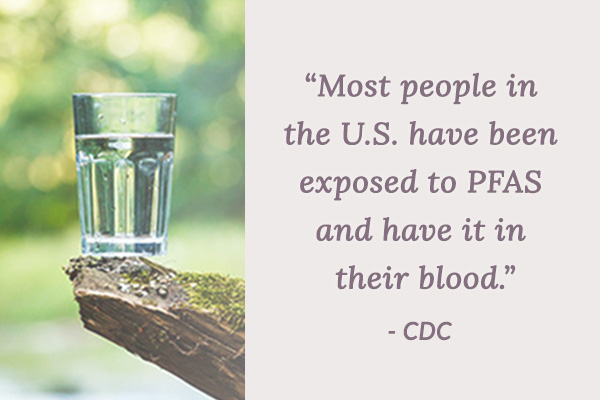
With these chemicals so deeply embedded in modern life, it’s easy to feel like there’s not much you can do to protect yourself. But the good news is that you’re not powerless. Not only can you reduce your exposure to PFAS, but—big sigh of relief—you can also help your body detox from these chemicals.
Let’s take a closer look at this invisible threat and the steps you can take to fight back.
PFAS and your hormones: a silent disruptor
Your hormones are the body’s command center, influencing everything from energy levels to fertility. When an invisible toxin starts interfering with this delicate system, it can quickly lead to problems. Research shows that PFAS chemicals can act as endocrine disruptors, meaning they mimic or block hormones, throwing your body’s natural balance off course.
One of the biggest concerns is PFAS’s impact on thyroid function. The toxins have been linked to lower levels of thyroid hormones, which can lead to fatigue, weight gain, brain fog, and even an increased risk of autoimmune thyroid disease.
Unfortunately, PFAS don’t stop there. The toxins may also affect estrogen and progesterone, two key hormones that regulate menstrual cycles, fertility, and even bone health. Some studies suggest that higher PFAS levels in the body are associated with irregular periods, reduced ovarian reserve, infertility and increased risk for PCOS. Elevated PFAS exposure may also lead to early onset menopause.
How to avoid PFAS and help your body detox
Now that you know how PFAS can disrupt your health, the next step is taking action.
Step 1: Minimize your exposure
Reducing PFAS in your daily life starts with knowing where they hide. Here’s how to dodge these toxic intruders:
Filter your water – One of the biggest sources of PFAS exposure is drinking water. A high-quality reverse osmosis or activated carbon filter can remove these chemicals and help keep your water clean.
Rethink nonstick cookware – Most convenient nonstick pans are coated with PFAS-containing compounds. Swap nonstick for stainless steel, cast iron, glass or ceramic alternatives.
Check your food packaging – PFAS are often found in grease-resistant fast food wrappers, microwave popcorn bags, and takeout containers. When possible, opt for fresh, whole foods and cook at home. Store leftovers in glass containers.
Choose PFAS-free personal care products – Some cosmetics, waterproof mascaras, and long-wear foundations contain PFAS. Look for “PFAS-free” or check ingredient lists for chemicals like PTFE or perfluoro- that signal the prescence of PFAS chemicals.
Avoid stain-resistant and waterproof fabrics – That stain-proof couch or waterproof jacket might be treated with PFAS. Instead, choose natural, untreated fabrics whenever possible.
Step 2: Support your body’s natural detox pathways
PFAS can linger in the body for years, but your liver, kidneys, and gut all play a role in clearing toxins. Here’s how to give them a boost:
Eat detoxifying foods: Cruciferous vegetables like broccoli, Brussels sprouts, and cabbage contain natural compounds such as sulforaphane and indole-3-carbinol, which help activate powerful phase II liver detoxification enzymes. These enzymes assist in neutralizing and eliminating harmful substances.
Hydrate, hydrate, hydrate: Drinking plenty of filtered water supports kidney function and helps move toxins out through urine.
Sweat it out: PFAS can be excreted through sweat, so regular exercise and saunas (especially infrared saunas) may help your body eliminate them.
Step 3: Supplements that support PFAS detox
Certain supplements can actively help bind or flush these chemicals out. Here’s what science says about the most promising options for PFAS detox:
Probiotics: your gut’s secret weapon
Your gut microbiome plays a surprising role in detoxing PFAS. Studies suggest that long-term probiotic consumption may be strongly linked to reduced serum PFAS concentrations. One cross-sectional study analyzing data of 9,469 adults, found that individuals who consumed probiotics had lower levels of certain PFAS compounds in their blood. Other studies suggest that PFAS can alter the gut microbiome, reducing beneficial bacteria and anti-inflammatory metabolites, underscoring the importance of supplementation to support the gut in purging these harmful substances.
Fiber flushes out PFAS
A diet rich in multiple types of fiber—soluble and insoluble—can help reduce PFAS levels by binding to the toxins and removing them. Soluble fiber forms a “trap” for PFAS, which then pass through the digestive system and are excreted in feces. Fiber also plays a crucial role in increasing bile acid excretion. Since bile helps digest fat and often binds to PFAS, boosting bile excretion promotes the removal of these toxins from the body. Additionally, fiber serves as a prebiotic to fuel beneficial bacteria in the gut and aid in PFAS removal.
Cholesterol-lowering compounds
Studies show that lowering cholesterol can also lower PFAS levels. It is believed that Red Yeast Rice, a traditional Chinese medicine used to lower cholesterol, may have a similar PFAS-clearing effect.
Omega-3s: an unexpected ally
Since fish and seafood can be food sources for PFAS exposure, researchers assumed fish oil supplements would increase PFAS levels—but they found the opposite. People who took fish oil actually had lower PFAS concentrations. This suggests Omega-3s may aid in detoxification. Look for high-quality fish oil supplements (third-party tested for purity), or plant-based omega-3s like flaxseeds and chia seeds if you prefer a vegan alternative.
Blood donation: the “official” method
It’s not a supplement, but it’s interesting to note that the most well-documented way to remove PFAS is donating blood. A 52-week study on Australian firefighters—who had high PFAS exposure—found that regular plasma and whole blood donations significantly reduced their PFAS levels over time.
PFAS are persistent, but you’re not powerless
By combining smart consumer choices, targeted supplements, and lifestyle changes, you can help your body flush out these harmful chemicals—one step at a time. PFAS is a forever chemical that doesn’t need to remain forever in your body! Stay consistent and let your body do what it was designed to do: detox and thrive.







